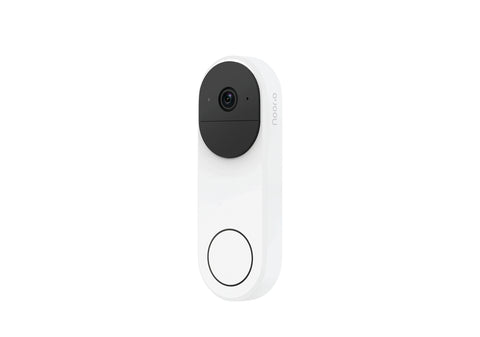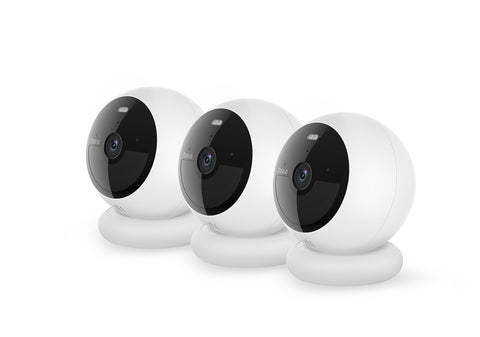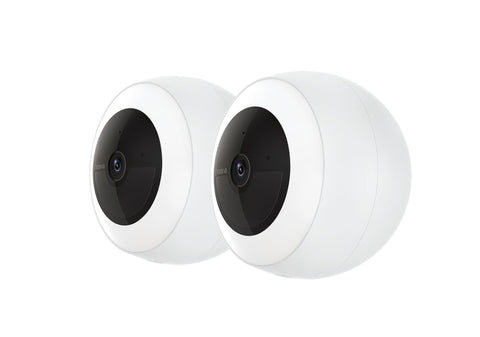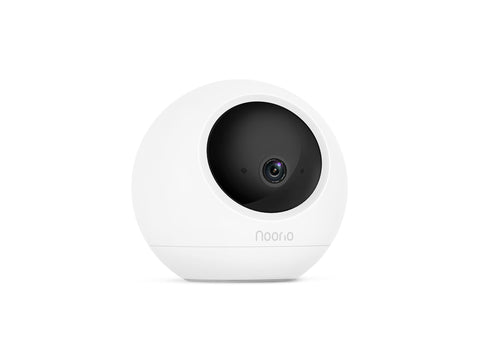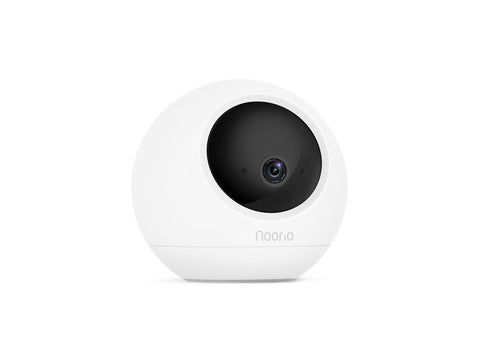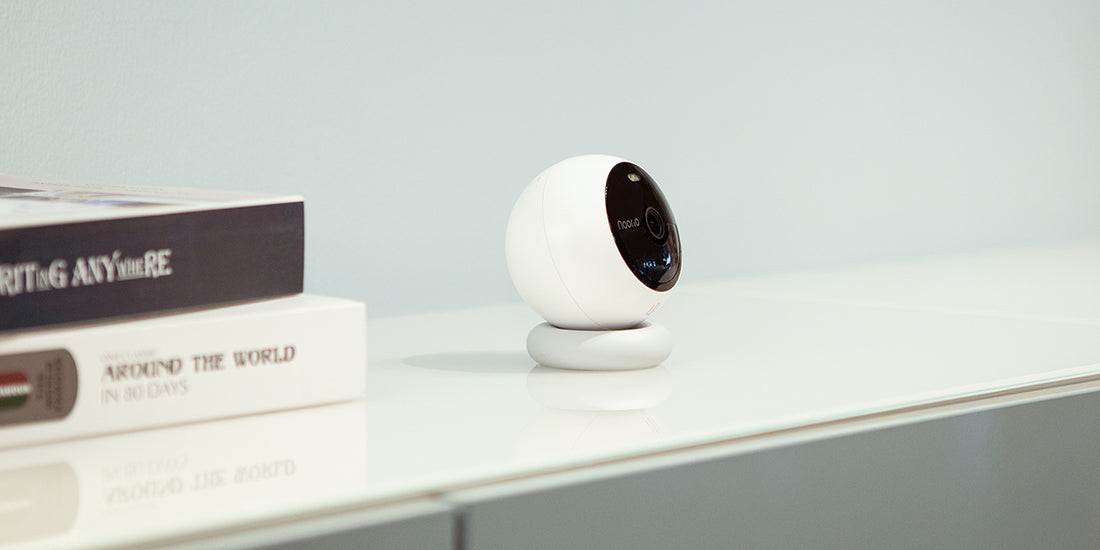Introduction
Motion-detecting security cameras are designed to automatically detect movement within their field of view.
They have sensors that pick up on changes between images that could indicate motion from people, vehicles, or animals. And They typically employ a combination of passive infrared (PIR) sensors, image processing, and video analytics to determine if there is motion in the scene. Once motion is detected, the cameras can send an alert, start recording video, or trigger a lighting system.
In this blog post, we will explore how far these motion-detecting cameras can sense movement under different conditions.

Factors that Impact Detection Range
There are several factors that can influence the detection range of a motion-detecting camera.
And these days, the application of AI and machine learning in security cameras is enhancing all aspects of motion detection including extended ranges, precision, low-visibility performance, multiple motion tracking, and customized detection.
Check these factors:
A.Camera Sensor Sensitivity and Resolution
How well a camera can record movement, especially at a distance, depends on the sensitivity and resolution of the sensor. More megapixels offer more resolution, allowing the camera to pick up movement from farther away and detect tiny changes.
AI and machine learning developments have enhanced sensor sensitivity, enabling cameras to take clearer pictures at a larger distance.
B.Optical Zoom and Lens
The lens of the camera's lens offers optical zoom, which enables the camera to receive a close-up picture of distant things. Higher resolution and optical zoom together improve the camera's capacity to detect far-off motion. The ability to detect motion at a larger distance is made possible by a higher zoom level and a more potent lens, which can record more detail from a greater distance.
AI-powered algorithms are now being employed to enhance the optical zoom function, providing clearer images even when zoomed in. These AI-driven enhancements can help maintain image quality and improve motion detection at extended ranges.
C.Lighting Conditions - Day or Night (Infrared Mode)
Lighting conditions also play an important role. In daylight, most standard security cameras can detect normal human movement at 50 to 100 feet.
At night, in low light or complete darkness, infrared LEDs illuminate the scene while remaining invisible to the human eye. In low-light conditions, cameras often switch to infrared (IR) mode, which uses IR illumination to "see" in the dark. Infrared night vision can extend a camera's motion detection range to 100 feet or more at night for human-sized movement, But the range might be reduced compared to daytime operation. You can know more in our blog below.
AI and machine learning have been essential in improving the performance of motion-detecting cameras under varying light conditions. The camera's images are processed by sophisticated algorithms to improve their clarity and contrast in low-light conditions. Additionally, cameras can detect motion at night more accurately by analyzing the heat signatures of moving objects when using AI-based infrared mode.
D.Speed and Size of Movement
Smaller or slower-moving things might need the camera to be closer to them in order to be noticed, but larger and quicker-moving objects are typically easier to detect at wider distances.
The performance of motion detection in terms of the speed and size of moving objects is also enhanced by AI and machine learning. Algorithms can analyze the movement and the size of objects in the camera's field of view more accurately, allowing the camera to detect even subtle movements or smaller objects at greater distances.
E. AI-enhanced motion detection algorithms and machine learning
Advances in AI and machine learning have improved motion detection capabilities in security cameras. Some cameras now use algorithms to analyze the video feed and detect motions more intelligently. These AI-powered cameras can recognize human forms, faces, vehicles, and other objects. They are able to distinguish moving objects from background motion like trees blowing in the wind. This makes motion detection much more accurate and helps extend the effective range.
Deep learning neural networks have been trained on huge datasets of video footage to develop sophisticated motion detection abilities. The AI systems can spot subtle motions, recognize partially obscured objects, and detect motions even in low visibility conditions like rain, snow, or nighttime. They are also able to track multiple moving objects at once and predict their paths. All of these AI-based techniques boost the range, effectiveness, and usability of motion-detecting cameras.
Some camera systems (Noorio is on the way) also use machine learning to customize the motion detection for each specific camera placement and environment. The AI algorithms can "learn" usual activities and motion patterns in the scene over time. This allows them to ignore expected motions from known objects like ceiling fans or flags while remaining sensitive to anomalous activity. The learning capabilities make motion detection both more accurate and attuned to site-specific needs, enabling longer ranges.
AI and computer vision have considerable potential to continue improving motion detection in security cameras through an increasing understanding of scenes, objects, and events.
Advancements in neural networks and computer vision will lead to even more intelligent motion-capturing systems that equal or surpass human-level detection abilities.
Typical Detection Ranges
Under ideal conditions, some cameras can detect motion at distances of 100 feet or more. With additional features, the range can extend to 400 feet or beyond.
- Daytime: Around 50-100 feet for human-sized motion
- Nighttime with infrared: 50-200 feet
- High megapixel/zoomed-in cameras: Up to 400 feet or more
Daytime Detection Range
During the day, when lighting conditions are optimal, motion-detecting cameras can typically detect human-sized motion up to 50-100 feet away. This range can be affected by factors such as sensor sensitivity, optical zoom, and lens quality.
Nighttime Detection Range with Infrared
The detection range can still be fairly impressive at night when cameras switch to infrared mode. Many cameras can detect motion between 50-200 feet away in the dark. However, this range can be affected by factors such as IR illuminator strength, sensor sensitivity, and camera settings.
Zoomed-In/High Megapixel Cameras
For cameras with high optical zoom levels or high megapixel counts, the detection range can be even greater. In some cases, these cameras can detect motion up to 400 feet away or more. Keep in mind, though, that using higher zoom levels or higher resolution settings can require more storage space and bandwidth for video streaming.
Extending the Detection Range
There are several ways to extend the detection range of motion-detecting cameras:
Using Multiple Cameras or Forming an Array
One effective method of extending the detection range is to use multiple cameras or arrange cameras in an array. By covering more areas and overlapping the detection zones of each camera, you can effectively extend the overall detection range of your security system.
Higher Resolution and Megapixel Cameras
Higher resolution and megapixel cameras, especially 4K cameras, provide maximum detail for detecting movement at a distance.
However, keep in mind that these cameras often come with higher price tags and may require more storage and bandwidth for video streaming.
Mounting the Cameras Higher Up
Mounting cameras higher up, such as on a pole, wall, or roof, reduces line-of-sight obstacles and opens up the field of view. Just be sure to consider the camera's viewing angle and the area you want to cover when choosing a mounting location.
With the right combination of these techniques, some camera systems can achieve motion detection ranges of 300 to 400 feet or more.

Conclusion
In the end, motion-detecting security cameras must balance detection range, image quality, and cost. For most homeowners, a camera with at least 1080p HD video resolution, infrared night vision, and an optical zoom lens should suffice for monitoring areas 50 to 200 feet away from the camera location.
For larger commercial spaces or more expansive outdoor coverage, 4K cameras, multiple high-resolution cameras, and strategic mounting positions may be needed to extend the range to 300 feet or beyond.
With the right cameras and setup, you'll have comprehensive coverage and peace of mind in knowing your space is monitored 24/7.
For a reliable and versatile home security camera with an impressive detection range, consider choosing the Noorio home security camera. Its combination of advanced features and affordable prices makes it an excellent option for securing your property and ensuring peace of mind.
